Introducing Braze Web SDK support for OpenAI’s ChatGPT Atlas browser
Published on October 21, 2025/Last edited on October 21, 2025/11 min read
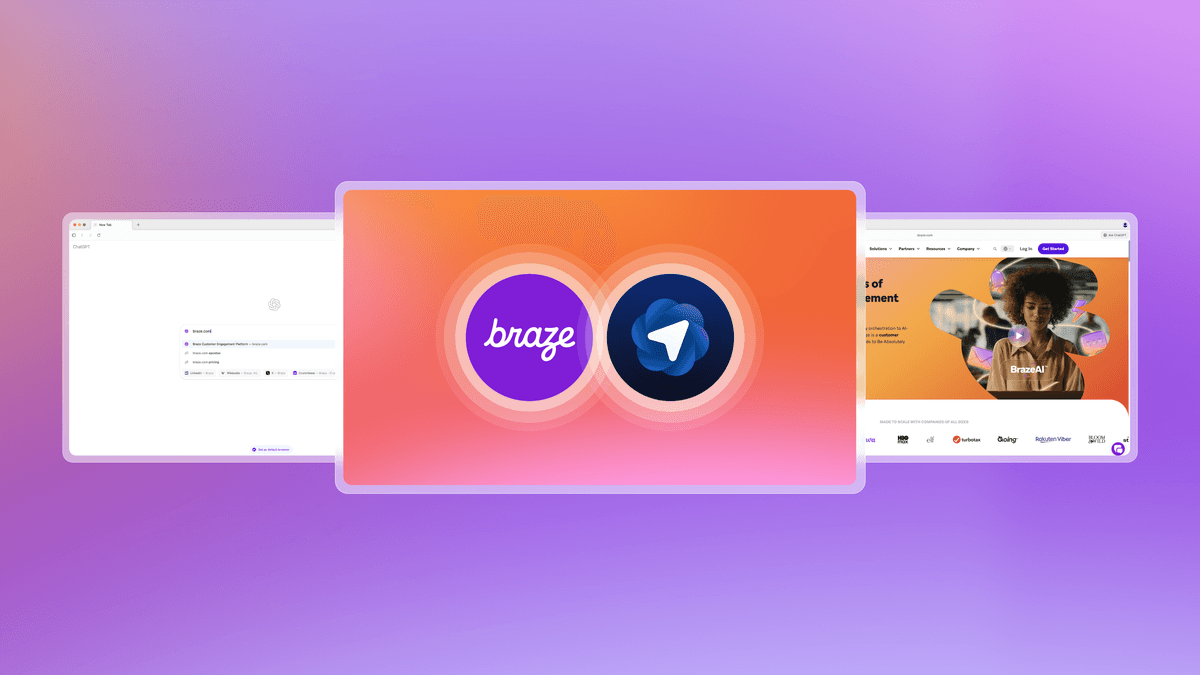
David Bielik & Matteo Barreca
It's been quite a busy month over at OpenAI. Three years on from the blockbuster launch of the original version of ChatGPT, the company has rolled out a new framework to allow third-party custom apps to operate within their wildly successful chat interface and, earlier today, OpenAI announced the launch of ChatGPT Atlas. This brand new web browser is built around ChatGPT, allowing web users to seamlessly browse the web and leverage generative AI in a single interface.
When OpenAI announced its app framework, Braze rapidly announced an integration, allowing brands to automatically gather data about user engagement with their custom apps while also powering personalized messaging experiences within the chat interface. Now we're pleased to announce that less than 24 hours after ChatGPT Atlas launched, it's possible for Braze customers to integrate our Web SDK to support more nuanced user profiles and 1:1 communication to users of the new browser.

A web push notification powered by Braze and delivered to OpenAI’s ChatGPT Atlas browser
For marketers who are ready to hit the ground running, check the documentation for the Braze Web SDK and get started integrating Braze with your website to support ChatGPT Atlas. For everyone else, read on for a deeper look at what the launch of OpenAI's new browser means for customer engagement and how Braze can help marketers make the most of it.
ChatGPT Atlas and the rise of AI-powered web browsers
When ChatGPT launched, the experience was revolutionary, allowing people to take advantage of generative AI to answer burning questions, swiftly spin up new content, and even chat through their problems, all from a simple, chat-based interface. But the launch of ChatGPT Atlas expands the scope of that platform, moving it from a discrete website to an essential functionality that’s fully embedded within the web browsing experience.
OpenAI isn’t the first company to try to tie together its generative AI platform and its web browser. In September, Google integrated its Gemini AI solution within its industry-leading Chrome browser, a move also taken by Microsoft’s Edge, Opera’s Neon, Perplexity’s Comet, and the Browser Company’s Dia web browser. But OpenAI’s effort has a major advantage: Namely, the fact that the company’s audience of more than 800 million weekly active users are already bought into the value of ChatGPT and have an inherent understanding and familiarity with the chat interface, potentially supporting increased adoption and engagement.
Will ChatGPT Atlas be as disruptive as Chrome?
The launch of ChatGPT Atlast could potentially lead to a sea change in how people engage with the web, similar to the one we saw when Google first launched Chrome in 2008. Google’s search engine was already dominant, making up more than 60% of the global market, but the decision to build search into the address bar (so users no longer had to type in a valid URL in order to visit a website and could seamlessly carry out a search instead) kicked off significant growth for the company, leading a landscape where approximately 90% of web searches today are done via Google.
With ChatGPT Atlas, a similar dynamic could be at play. The new browser effectively replaces the “search” functionality of Chrome with a new “chat” approach, allowing users to carry out two-way chat conversations from the address bar. This advances OpenAI’s efforts to make chat the default way that today’s consumers find information, rather than just receiving a static list of curated websites.
How OpenAI is leveraging ChatGPT within the browsing experience
In its announcement blog post, OpenAI noted that the launch of its browser was part of an ongoing expansion of ChatGPT as a platform across a wider and wider range of different touchpoints, channels, and experiences. However, ChatGPT Atlas has some notable differences both from traditional web browsers and from ChatGPT’s usual interface, reflecting the fact that leveraging generative AI within the context of a browser sometimes requires a new approach:
- Memories: While the browser is able to remember information about user sessions, typed inputs, and other interactions, it also requires users to opt in to having that data leveraged to train their model, allowing them to decide what information they do and don’t want included.
- Splitscreen “Ask ChatGPT”: The browser includes a ChatGPT sidebar that allows users to seamlessly summarize what they’re seeing, carry out tasks, or call up additional information, all without leaving the page they’re viewing.
- Click-based collaboration: This functionality allows web users to click on different aspects of web pages and experiences to easily leverage ChatGPT to fill out forms, draft emails, and summarize content as needed.
- Agent mode: For OpenAI premium subscribers, ChatGPT Atlas can automate tasks from within the browser interface (such as making purchases or booking flights); however, the browser will not allow ChatGPT to run code, download files, add extensions, or access other apps on a user’s computer, minimizing potential security risks.
How ChatGPT Atlas may impact marketing strategies
In just a few short years, ChatGPT and other forms of AI have already had an outsized impact on the digital landscape, with 52% of new articles on the internet written by AI (but not this one!) and 50% of consumers already using AI-powered search. The introduction of ChatGPT Atlas has the potential to supercharge this evolution, reshaping how brands interact with their customers on the web and making generative AI a central pillar in the modern consumer experience.
Some likely impacts include:
AI-friendly websites will become even more important
With ChatGPT Atlas, more consumers will begin experiencing the majority of their time on the web through a specifically AI-centric lens, informing not just what pages and information they see, but how they interact with those web properties. That’s going to put more pressure on brands to ensure that their websites and landing pages are built in thoughtful, AI-friendly ways, allowing for effective answer engine optimization (AEO) that will make them more discoverable by ChatGPT and its competitors. In addition, brands will face pressure to ensure that the actions they allow customers to take are compatible with OpenAI’s agentic flows, as the introduction of ChatGPT Atlas will likely increase the usage of ChatGPT-powered agents on the web.
The move from third-party to first-party data will accelerate
As more browsers (though, crucially, not Chrome) have deprecated third-party cookies, companies around the world have had to rethink their data strategy, with many choosing to re-center their marketing efforts around first-party data instead. With ChatGPT Atlas attempting to re-center the web browsing experience around a generative AI-powered chat experience rather than traditional search, brands who have gone all-in on marketing strategies built around third-party data and search-focused AdTech will be at a competitive disadvantage, unable to understand and reach their audiences as effectively as they once did in a pre-GenAI world. That will make embracing first-party data more important, both within the context of OpenAI’s ecosystem and beyond.
Understanding (and engaging) customers across touchpoints will be crucial
Like Google and Meta before them, OpenAI is hard at work creating a compelling, highly sticky digital ecosystem that is designed to maximize user engagement. As the company’s audience grows, both within the traditional ChatGPT interface and among web users with the launch of ChatGPT Atlas, those individuals will likely carry out more of their digital engagement within that ecosystem, making it essential for the brands that sell to them to get a deeper understanding of their behavior within those key contexts. Thankfully, OpenAI’s support for a framework for custom apps that allows for deeper understanding of its users and in-experience messaging makes that possible, empowering brands to expand the first-party relationships they already have with their mobile app users to include ChatGPT. Brands will need to take a similar approach to ChatGPT Atlas, leveraging web SDKs to better understand how users are engaging with the AI-powered browser and to reach them with direct, personalized messages that provide concrete value. By understanding what customers care about and providing timely communication on the right channels, marketers can maximize those users’ attention and improve their “AI likability score” over time, driving long-term engagement gains.
How Braze supports customer engagement in connection with ChatGPT Atlas
To meet the moment, marketers need a way to gather information on user behaviors and preferences within ChatGPT Atlas and to be able to connect with those users in responsive, personalized ways.
The Braze Web SDK makes both of these things possible, supporting an out-of-the-box integration that can power exceptional customer engagement for ChatGPT Atlas users from day one.
By integrating the Braze Web SDK, brands can seamlessly collect, sync, and analyze nuanced data on users’ behaviors and preferences as they use ChatGPT Atlas to browse their website. That, in turn, provides a highly valuable stream of first-party data that can be used to personalize and tailor websites and other web experiences to each user as they engage, even when that engagement comes in the context of a ChatGPT conversation. In addition, because the Braze Web SDK is designed to support direct customer messaging capabilities, brands that implement it will be able to reach ChatGPT Atlas users right away across a range of different channels, including:
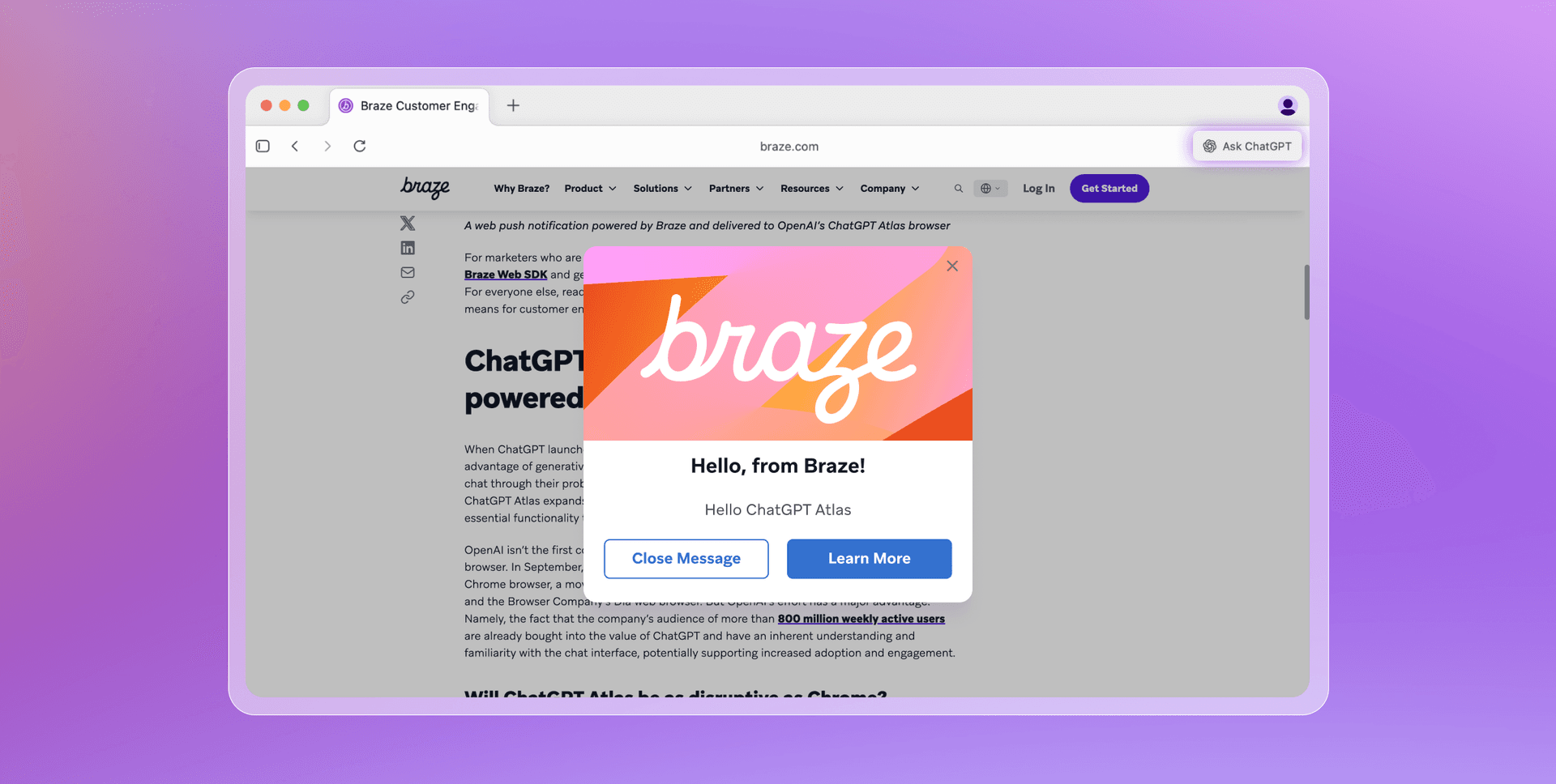
In-browser messages powered by the Braze Web SDK allow marketers to communicate directly with web visitors within the ChatGPT Atlas browser
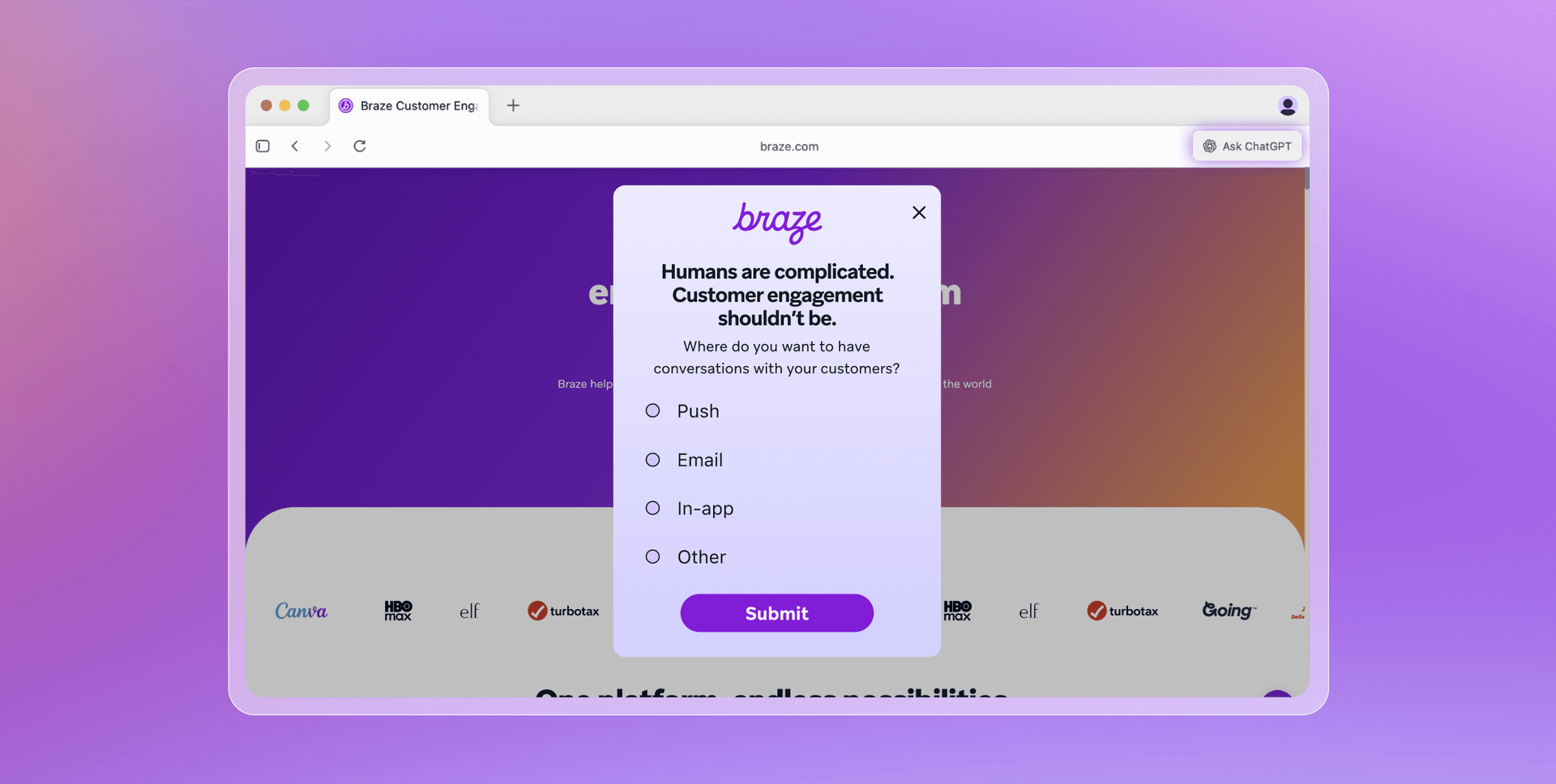
Marketers can leverage the Braze Web SDK to get a better understanding of user preferences via tools like in-browser surveys

Content Cards powered by the Braze Web SDK support unobtrusive, persistent messaging that helps keep users informed without overwhelming them
By taking advantage of the Braze Web SDK, brands can get a powerful headstart when it comes to taking full advantage of ChatGPT Atlas to support their customer engagement efforts. With ChatGPT and other AI assistants and tools on the rise, marketers who don’t take steps to understand how their audiences are engaging with these popular touchpoints risk key blind spots that could undermine their ability to connect effectively with customers and drive stronger results over time.
Final thoughts
While the launch of ChatGPT Atlas is only part of a larger effort by OpenAI, it represents another step forward toward a future where chat-based GenAI plays a central role in helping us all gather, process, and take action on a world of information. This evolution makes it more important than ever for brands to ensure that their customer engagement efforts are thoughtful, effective, and highly relevant to the people receiving them, something that requires marketers to optimize the customer journey for each of their users and to adjust the experiences they receive as consumer preferences evolve.
Braze is built to help brands navigate this landscape successfully, supporting everything from web push notifications sent via ChatGPT Atlas to a cross-channel flow of messages across email and SMS that are enriched and personalized with chat data gathered within ChatGPT. Making sure that each individual gets the right messages and experiences for them at the appropriate times doesn’t just make for better marketing results; it helps to build trust and support the kind of long-lasting customer relationships that customer engagement success is based on.
If you’re interested in integrating the Braze Web SDK in order to support enriched user profiles and 1:1 communication in connection with ChatGPT Atlas, check out our Integrating the Braze SDK developer guide.
Forward-looking statements
This blog post contains “forward-looking statements” within the meaning of the “safe harbor” provisions of the Private Securities Litigation Reform Act of 1995, including but not limited to, statements regarding the anticipated performance of and benefits from Braze, its products and integrations, including without limitation any integrations to ChatGPT Atlas or other use of the Braze Web SDK. These forward-looking statements are based on the current assumptions, expectations and beliefs of Braze, and are subject to substantial risks, uncertainties and changes in circumstances that may cause actual results, performance or achievements to be materially different from any future results, performance or achievements expressed or implied by the forward-looking statements. Further information on potential factors that could affect Braze results are included in Braze’s Quarterly Report on Form 10-Q for the fiscal quarter ended July 31, 2025, filed with the U.S. Securities and Exchange Commission on September 5, 2025, and the other public filings of Braze with the U.S. Securities and Exchange Commission. The forward-looking statements included in this blog post represent the views of Braze only as of the date of this blog post, and Braze assumes no obligation, and does not intend to update these forward-looking statements, except as required by law.
Related Tags
Be Absolutely Engaging.™
Sign up for regular updates from Braze.
Related Content
View the Blog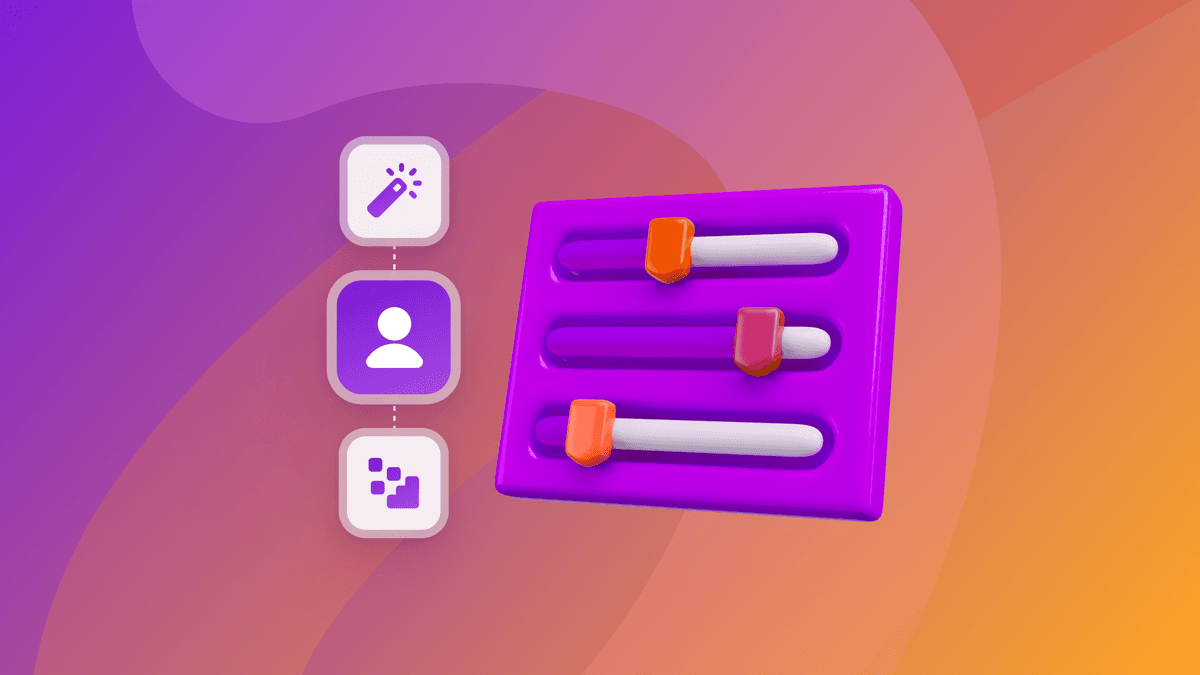
How behavioral marketing turns data into personalized experiences
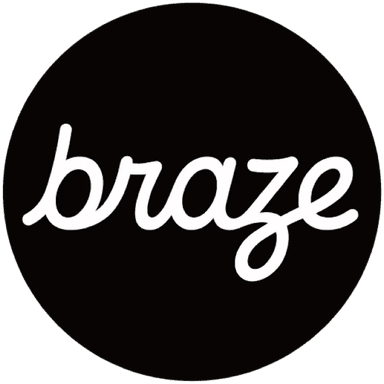
Team Braze
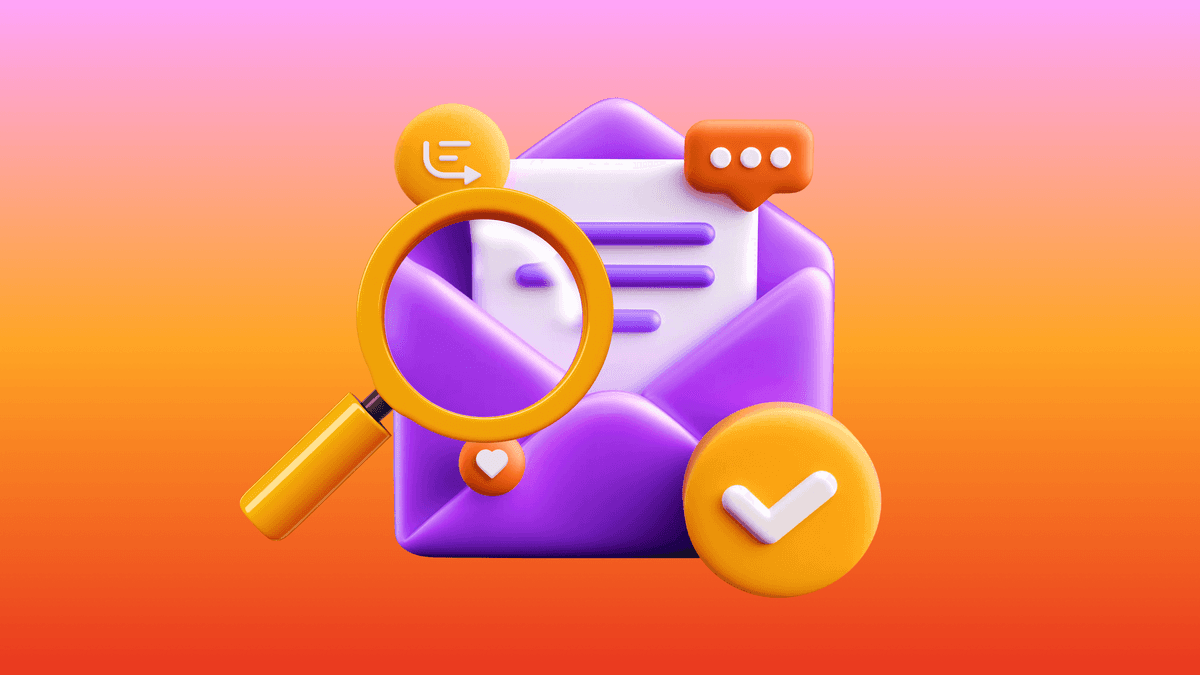
The new inbox reality: How iOS changes are reshaping email marketing

Aparna Prasad

Experience optimization: Turning data insights into better journeys
